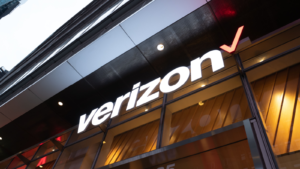For example, the first company distinguishes itself by spending substantial research and development to gain a competitive advantage in several therapeutic areas. Similarly, the second company’s substantial expenditures on fiber networks and 5G put it in the lead in the telecom market. Its solid cash flow and well-thought-out client retention tactics highlight the third company’s stability and resilience. In the meantime, the fourth company’s calculated acquisitions in the cancer and cardiovascular fields show that it is acutely aware of the need to capitalize on high-growth markets.
Furthermore, the fifth company’s innovative strides in pharmacy operations and digital expansion, the sixth company’s successful return to market share, and the seventh company’s dominance in distribution paint a vivid picture of diverse opportunities across multiple industries.
Top Dividend Stocks: Pfizer (PFE)

Pfizer’s (NYSE:PFE) research budget is the most massive in the industry, yielding a forward dividend of 6.4%. Here, the expenditures support cutting-edge technology and a solid pipeline. Pfizer’s considerable investment in research reflects its focus on creating ground-breaking medicines in a range of therapeutic areas. This reflects Pfizer’s focus on remaining at the edge of medical progress and fostering expansion by introducing sharp treatments.
Additionally, Pfizer’s cancer research capacity increased overnight with the acquisition of Seagen, and by 2030, the company intends to launch at least eight potential blockbuster drugs. This emphasizes Pfizer’s calculated action to fortify its position in oncology, a therapeutic field expanding quickly. The doubling of resources through the Seagen purchase demonstrates Pfizer’s commitment to portfolio development and blockbuster potential, positioning the business for faster growth in the cancer sector.
Lastly, through its cost realignment initiative, Pfizer hopes to save at least $4 billion in net costs by the end of 2024. Hence, Pfizer’s emphasis on cost reduction and efficiency reflects its focus on increasing the bottom line and deriving long-term growth.
AT&T (T)

The forward dividend yield labeled with AT&T (NYSE:T) is 6.8%. AT&T announced a new aim to save an extra $2 billion or more by mid-2026. This happened after exceeding its original objective of $6 billion or more in run-rate costs. Despite higher-than-anticipated CapEx in fiber and 5G networks, AT&T derived $16.8 billion in free cash flow (in 2023).
Indeed, reaching cost-saving goals ahead of schedule signifies AT&T’s edge in financial efficiency. In short, the company is skilled at managing operating costs. In 2023, AT&T’s mid-band 5G network covered over 210 million people. By the end of 2025, the company may have connected over 26 million residential and commercial locations to its fiber network. Thus, AT&T is focused on investing in tech and infrastructure to satisfy changing customer and market expectations, reflecting the growth of its 5G and fiber network capabilities.
Lastly, expanding AT&T’s network coverage and reach strengthens its competitive advantage and market positioning, establishing the company as a pioneer in high-speed internet and mobile connections.
Top Dividend Stocks: Verizon (VZ)

Verizon (NYSE:VZ) has a 6.9% forward dividend yield. In Q1 2024, Verizon derived $2.7 billion in free cash flow, a more than 16% boost over the same period last year. Verizon’s solid cash flow production highlights the company’s prudent capital deployment and sound financial standing.
Moreover, Verizon’s postpaid phone net additions performance increased in Q1 2024, reducing the net loss of 158K despite adopting price adjustments. This is a considerable improvement of more than 100K net earnings compared to the previous year’s period. Hence, this demonstrates how Verizon’s distinct value offer and focused retention initiatives have helped it draw in new business and keep hold of its current clientele.
In addition to offering special benefits like the myPlan program and bundled services like Netflix (NASDAQ:NFLX) Plus Max, Verizon’s segmented go-to-market strategy has been crucial in strengthening customer ties, leading to recurring top-line.
Johnson & Johnson (JNJ)

Johnson & Johnson (NYSE:JNJ) has a forward dividend yield of 3.3% and more than six decades of dividend growth. The company’s acquisition of Shockwave Medical is a calculated attempt to boost its market lead in the cardiovascular treatment segment.
Critically, Johnson & Johnson gained access to Shockwave’s cutting-edge intravascular lithotripsy (IVL) technology. This treats peripheral and coronary artery disease. This acquisition aligns with Johnson & Johnson’s plan to become the top MedTech business in cardiovascular intervention’s high-growth markets.
Moreover, Johnson & Johnson’s oncology portfolio is solidified. The company’s capacity to provide precision biologics for cancer therapy improved with the conclusion of the Ambrx purchase. Johnson & Johnson has an oncology portfolio boost through Ambrx’s antibody-drug conjugate (ADC) platform and promising pipeline. This also increases the company’s capacity to create targeted cancer medicines.
Finally, Johnson & Johnson is focused on growing its market share in the oncology sector. This strategic acquisition reflects its goal of meeting unmet medical demand in cancer therapy.
Top Dividend Stocks: Walgreens (WBA)

Walgreens‘ (NASDAQ:WBA) dividend yield is 5.5%. To support pharmacy services, Walgreens has invested in 11 micro-fulfillment facilities, which comprise more than half its total footprint. This growth demonstrates the company’s focus on boosting pharmacy operations and raising customer satisfaction levels through fulfillment process optimization.
Furthermore, there are observable advantages to using micro-fulfillment centers, such as higher NPS ratings, patient retention, and adherence. These facilities have improved the general pharmacy experience for consumers by freeing pharmacists and technicians to focus more on activities involving interacting with clients.
Additionally, Walgreens can concentrate on clinical operations and broaden pharmacy services beyond standard dispensing by implementing micro-fulfillment centers. This change in strategy demonstrates the company’s focus on using its pharmacists’ knowledge base to deliver better healthcare services to people. Sales on Boots.com increased considerably from the previous year. It now accounts for more than 17% of retail sales in the UK.
To conclude, this foray into the online market demonstrates the efficacy of Walgreens’ endeavors to augment its online visibility and leverage the burgeoning e-commerce phenomenon within the retail pharmacy sector.
British American Tobacco (BTI)

The forward dividend yield for British American Tobacco (NYSE:BTI) is 10.1%. Due to a 1.6% gain in the premium category, BTI’s volume share in the U.S. premium segment has improved by 0.4% since January. Regaining market share in the premium area of the U.S. market reflects that British American Tobacco executes business strategy and marketing initiatives sharply.
Indeed, the rise in volume share indicates that, in contrast to rivals, customers are reacting favorably to BTI’s product offers. Regaining market share in the U.S. indicates that BTI is becoming more competitive in a considerable market. It shows the potential for top-line growth and bottom-line in the area. Similarly, it reflects how well the company’s attempts to make up lost ground have worked.
Finally, having saved close to £500 million in 2023, BTI hopes to save an additional £1 billion by 2025. Efficiency gains show how BTI prioritizes operational excellence and cost reduction. These savings improve the company’s solid flexibility, freeing up funds for wise investments, debt paydowns, or shareholder dividends.
Altria (MO)

Altria (NYSE:MO) has a forward dividend yield of 9.2% and a dividend growth history spanning more than 50 years. The company is focused on expanding accessibility to its smoke-free products. This is reflected in the quick growth of NJOY ACE distribution to over 75K outlets. Altria has successfully expanded its market reach by exceeding its distribution objectives. The company is capturing a substantial share of the e-vapor and cigarette sales channels. Thus, Altria’s broad distribution network gives them a competitive edge in reaching many consumers.
Moreover, NJOY ACE is now available in over 75K outlets, indicating a considerable rise in Altria’s smokeless goods retail presence. Altria’s success surpassing its initial target of 70K shops indicates its distribution strategy’s efficacy and capacity to accelerate market penetration.
Furthermore, the fact that these outlets account for around 75% of the volume of e-vapor and 55% of the volume of cigarettes in the multi-outlet and convenience channel in the U.S. highlights Altria’s strategic location inside important distribution channels. Therefore, by gaining a sizable portion of these channels, Altria improves its capacity to meet customer demand for smokeless alternatives and fortifies itself competitively.
As of this writing, Yiannis Zourmpanos held long positions in PFE, T, VZ, JNJ, WBA and BTI. The opinions expressed in this article are those of the writer, subject to the InvestorPlace.com Publishing Guidelines.
Yiannis Zourmpanos is the founder of Yiazou Capital Research, a stock-market research platform designed to elevate the due diligence process through in-depth business analysis.
